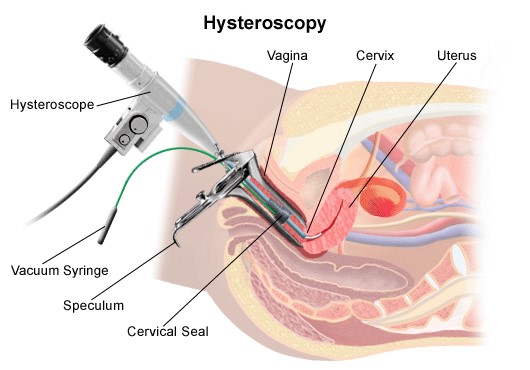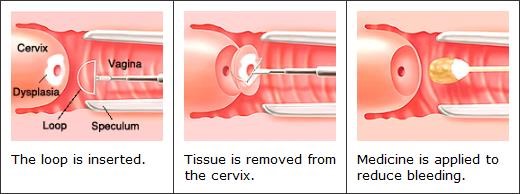
Minimally Invasive In-office Procedures Performed with Anesthesia
Hysteroscopy
Hysteroscopy provides a non-surgical way for your gynecologist to diagnose or treat uterine problems. These include removing adhesions, locating an intrauterine device, or determining the cause of repeated miscarriage.
During this procedure, a healthcare professional uses a hysteroscope, which is a thin, lighted, telescope-like instrument that is inserted into your uterus through the vagina. It sends pictures of your uterus to a screen for further examination.
LEEP Procedure
A gynecologist may use the loop electrosurgical excision procedure (LEEP) when a PAP smear indicates there are abnormal cells on the surface of the cervix. During the procedure, she uses an electrically-charged, thin wire loop to cut away the abnormal tissue.
Your cervix will be numbed with a medicine before the procedure is started. After you are treated, you may experience some cramping or other side effects. Your health care provider can explain more about these effects to you.
D&C: Dilation and Curettage
Dilation and curettage, commonly called a D&C, is one of the most common gynecological procedures. During this procedure, the doctor removes your uterine lining with suction or a sharp curette (surgical instrument). This procedure is a way to diagnose uterine conditions including uterine cancer or polyps and the precancerous condition endometrial hyperplasia. This procedure may also be recommended to remove uterine fibroid tumors, a molar pregnancy, or a placenta that remains in the uterus after a delivery that has caused excessive bleeding.
Polypectomy
Polyps are usually small stalked growths sticking out from the mucosal lining of the cervix or the endometrial lining of the uterus. They are usually benign, but some may become malignant. They may be a source of abnormal bleeding. If they are identified during a routine exam, they may be safely removed and sent to the lab for further evaluation.
Endometrial Ablation
Endometrial ablation is a procedure to remove a thin layer of tissue (endometrium) that lines the uterus. It is done to stop or reduce heavy menstrual bleeding. But it is only done on women who do not plan to have any children in the future.
Uterine Artery Embolization
Uterine artery embolization is a procedure to get rid of noncancerous tumors in the uterus (uterine fibroids). It does not use major surgery, so you may recover faster. You also may not need to stay in the hospital.


